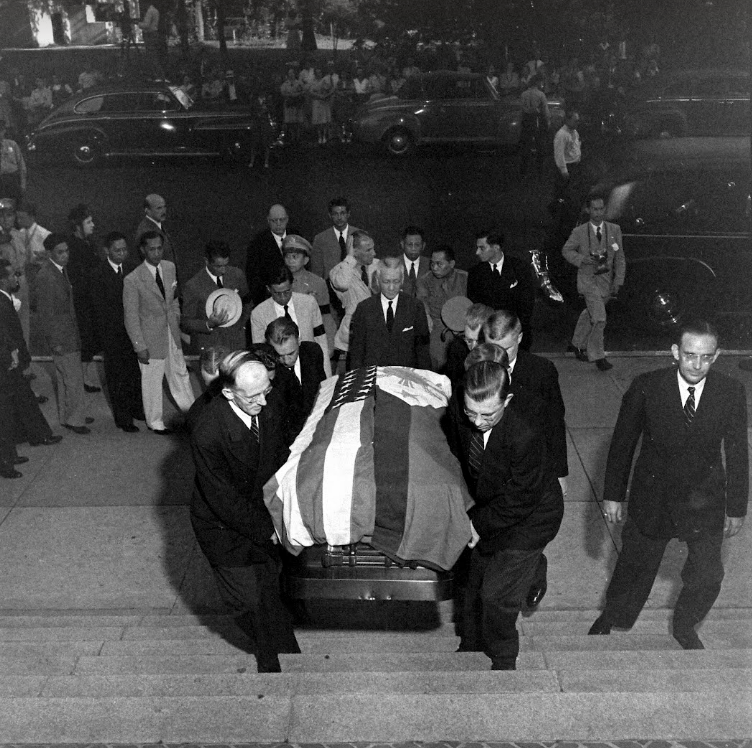
#TodayinHistory in 1601, the Colegio de San Jose was established by the Jesuits in Manila (#Intramuros) #PH. It is now known as the San Jose Seminary, located inside the Ateneo de Manila University campus in Quezon City. THREAD. #Kasaysayan #History 

The Society of Jesus (known as Jesuits), a religious order in the Catholic Church, was founded by Ignatius of Loyola and approved by the Pope in 1540. In the backdrop of the Protestant Reformation, the Jesuits were instrumental in the Counter-Reformation efforts in Europe. 

The #Jesuit order arrived in #PH from Mexico in 1581 led by their Superior, Antonio Sedeño. From his group's pioneering efforts, Jesuit mission stations & schools were established. Sedeño founded the Universidad de San Ignacio in #Intramuros in 1590.
As a proponents of the Ratio Studiorum since 1599, the school advocated 4 core subjects: Theology, Philosophy, Latin, & Greek. The Colegio de San Jose, founded #onthisday in 1601, also located in Intramuros, was the univ's school to prepare boys for priesthood. 

Accused of the assassination of monarchs & embroiled in financial controversies, the Jesuits were expelled by King Carlos III of Spain from the Spanish Empire (including #PH) in 1768. Four years later, the Jesuits would be suppressed & abolished by Pope Clement XIV.
Upon issuance of expulsion in #PH on 19 May 1768, Spanish troops had the Colegio surrounded, & its keys taken, its rector replaced. All 41 students enrolled in the Colegio who were in the Colegio's farm in San Pedro Tunasan were redirected to @LetranOfficial & @UST1611official.
Jesuits in #PH had to let go of 7 colleges, 10 Jesuit residences w/ their own parishes, including the 2 missions in Marinduque & Negros. The Universidad de San Ignacio was dissolved, but its extension, Colegio de San Jose, was given to the secular priests, then Dominicans.
Upon the return of the Jesuits in #PH in 1859, they brought w/ them progressive ideas in the arts, humanities, and the sciences—even liberal ideas of openness, equality, & rights that have been spreading in Spain & Europe in the 19th century.
https://twitter.com/indiohistorian/status/1460940697033269265?s=20&t=cVNJZhNWTYKtsXBSBiO8LA
The Jesuits established what would become the @ateneodemanilau in the year of their return, but the ownership of San Jose College would be contested by the Jesuits in PH courts vs. the Dominicans, from 1901-05, during the American colonial administration. 

The Colegio, now the San Jose Seminary, was relocated several times, most especially due to the destruction of Manila in #WWII. In 1964, it finally got its permanent home inside the @ateneodemanilau campus in Quezon City. 

https://twitter.com/indiohistorian/status/1489154513072123908?s=20&t=cVNJZhNWTYKtsXBSBiO8LA


Photos:
- Colegio-Observatorio, c. 1932, Eduardo de Leon Collection
- San Ignacio de Loyola recibiendo del cielo el nombre de Jesús (1676), Juan Valdes de Leal, @MuseoBASe
- Ratio Studiorum
- Colegio de San Jose courtyard depicted in a postcard, Presidential Museum & Library
- Colegio-Observatorio, c. 1932, Eduardo de Leon Collection
- San Ignacio de Loyola recibiendo del cielo el nombre de Jesús (1676), Juan Valdes de Leal, @MuseoBASe
- Ratio Studiorum
- Colegio de San Jose courtyard depicted in a postcard, Presidential Museum & Library
• • •
Missing some Tweet in this thread? You can try to
force a refresh













